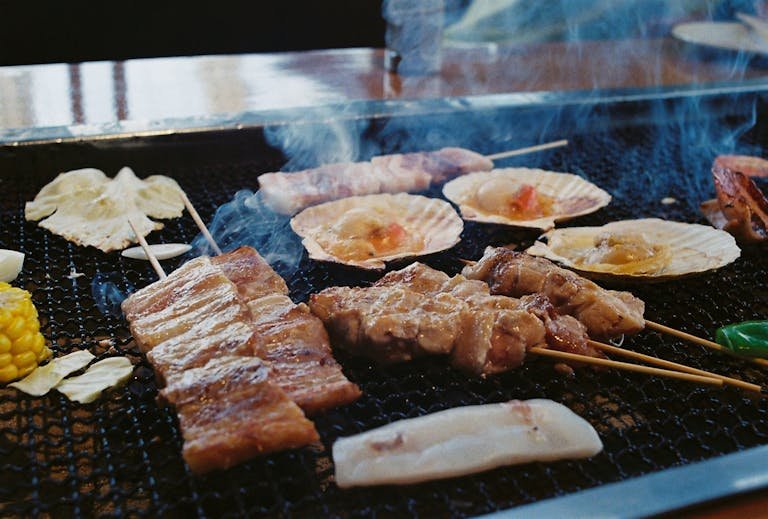5 Easy Korean Banchan Recipes: A Beginners Guide
Master 5 simple Korean banchan recipes for beginners! Learn how to make authentic Korean side dishes like kimchi, bean sprouts, and more with our easy guide.
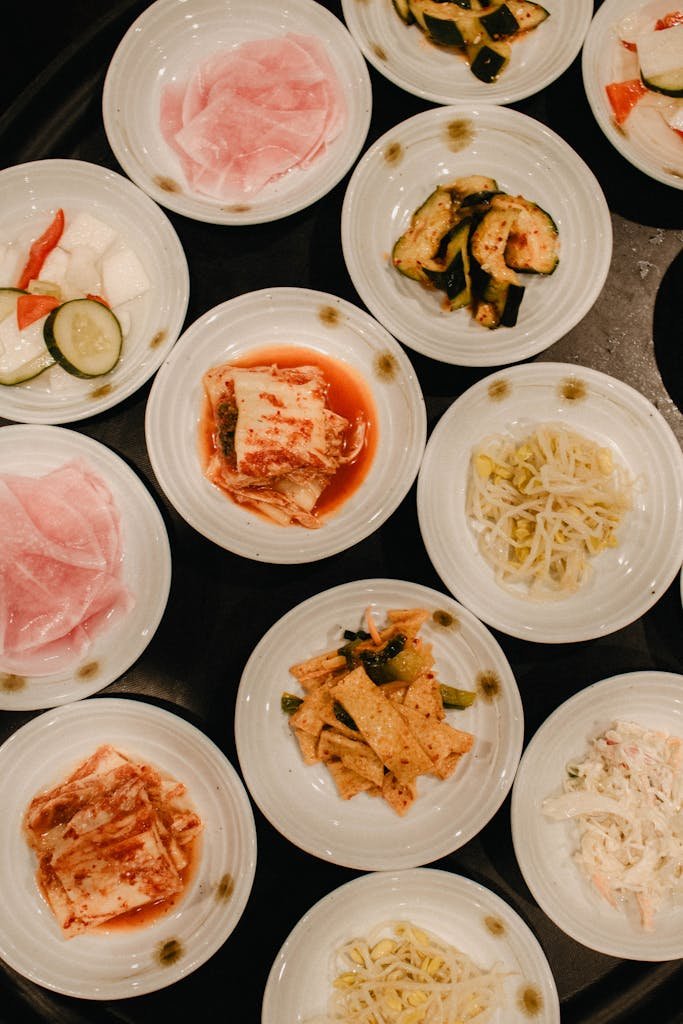
What really excites me about Korean food? It’s not just the main dishes—it’s those incredible little side dishes called banchan that turn every meal into a feast!
Honestly, if I could figure out these recipes after setting off my smoke alarm three times in one cooking session, you can definitely do this! Today, I’m sharing my five favorite beginner-friendly Korean banchan recipes that will make your Korean banchan meals feel both authentic and impressive.
Understanding Korean Banchan: Your Gateway to Korean Cuisine
Korean Banchan isn’t just food; it’s the heart and soul of Korean dining! You don’t need a lot of fancy equipment to get started—just some basic pots and pans, a good knife, and a few mixing bowls.
For ingredients, make sure to stock up on some essentials: soy sauce, sesame oil (the good kind!), garlic (a lot of it!), and gochugaru (Korean red pepper flakes). I keep these in what I like to call my “Korean cooking corner” in the kitchen. It’s nothing fancy—just a shelf in my pantry—but it makes me feel like a pro, you know?
The beauty of Korean banchan is that most recipes are really forgiving. Sure, there are traditional methods for making everything, but I’ve found that as long as you get the basic techniques down, you can totally make these dishes your own.
Quick & Crispy Cucumber Kimchi (Oi Kimchi)
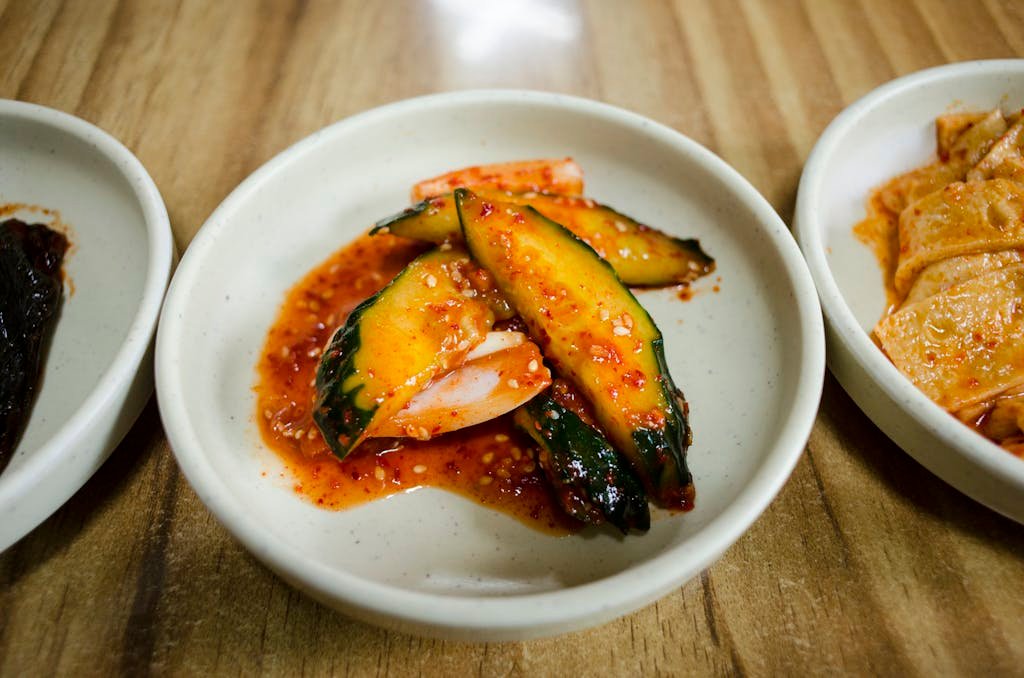
This cucumber kimchi was the first Korean banchan I ever tried making, mainly because cucumbers were on sale and I felt adventurous. It has become my go-to recipe when I want to impress guests without stressing out in the kitchen.
You’ll need:
- 2 cucumbers
- 2 tablespoons sea salt
- 3 cloves of garlic, minced
- 2 green onions, chopped
- 2 tablespoons gochugaru
- 1 tablespoon fish sauce (optional for vegetarians)
- 1 tablespoon sesame seeds
Firstly, slice those cucumbers thin, but not too thin. Sprinkle them with salt and let them sit for about 30 minutes. I usually take this time to catch up on my favorite K-dramas, but be careful not to get too engrossed and forget about them!
After draining and squeezing out the excess water (don’t be shy – those cucumbers can handle it!), mix in all the seasonings. The trick is to really massage everything together with your hands. Sure, it’ll stain your fingers red, but that’s just a sign of your dedication as a budding Korean cook!
One time, I got a bit too enthusiastic with the gochugaru and nearly breathed fire after tasting it. Start with a little and add more if you want – you can always increase the heat, but you can’t take it away! Store it in the fridge for up to a week, although it rarely lasts that long in my house.
Sweet and Savory Braised Potatoes (Gamja Jorim)
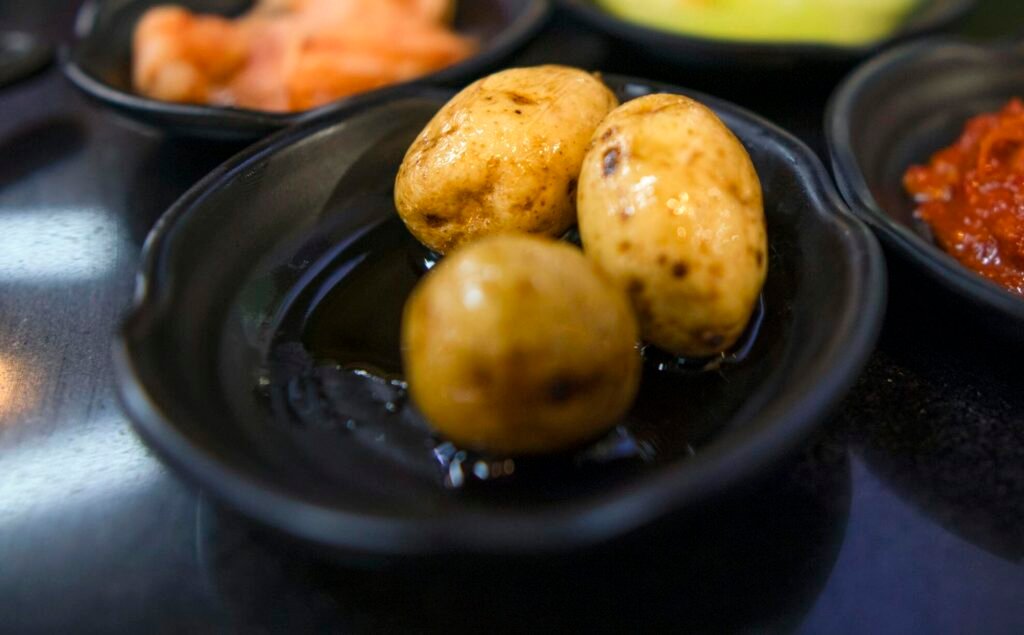
Gamja Jorim is the ultimate comfort food among Korean banchan, and I can honestly say it has saved many of my dinner parties! These braised potatoes are nearly foolproof, which is exactly what I need sometimes.
First things first – grab about some baby potatoes. I prefer the small ones because they cook evenly and look adorable on the plate. If they’re too big, just cut them into bite-sized pieces.
Now, let’s talk about the sauce:
- 3 tablespoons soy sauce
- 2 tablespoons sugar
- 1 cup water
- 1 tablespoon minced garlic
- A splash of sesame oil
Combine everything in a pot and let it simmer until the potatoes are tender and the sauce becomes sticky and glazed. This usually takes about 20-25 minutes, or roughly the length of an episode of your favorite sitcom. Just keep an eye on the liquid level!
The best part? These potatoes taste even better the next day after they’ve soaked up all that sweet and savory goodness. Just try not to snack on them all before serving!
Classic Bean Sprout Banchan (Sookju Namul)
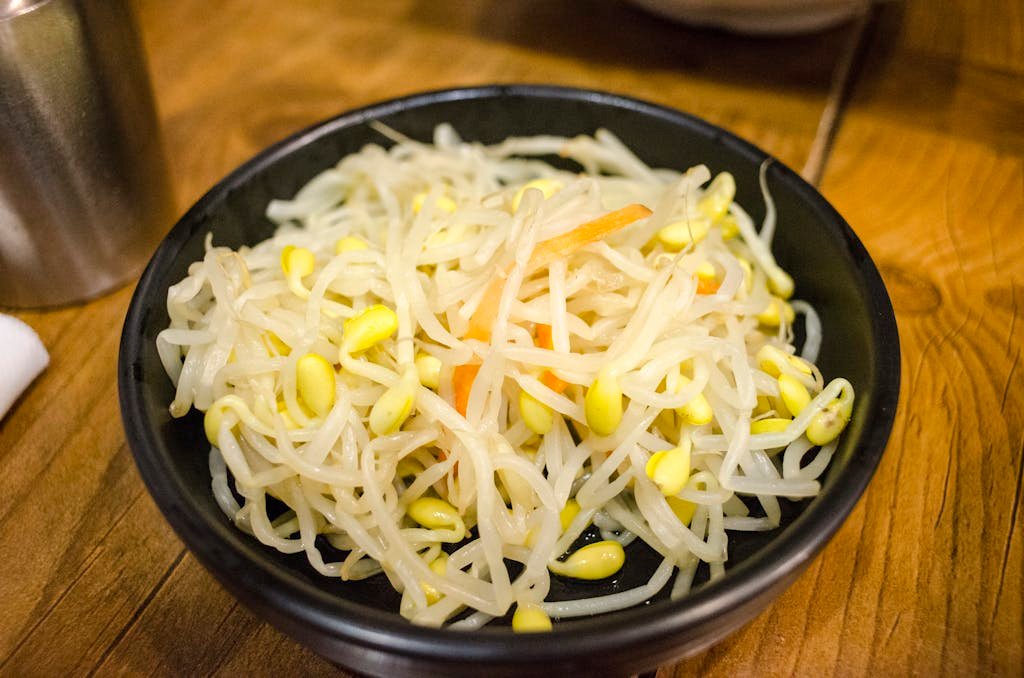
Let’s talk about Sookju Namul – my go-to dish when I need a quick Korean banchan! Bean sprouts are the unsung heroes of Korean cuisine, and this recipe is one of the simplest I have.
Start with fresh bean sprouts – skip the canned ones! You’ll need about 450 grams of sprouts, which may seem like a lot, but they cook down to almost nothing.
The secret to perfect bean sprouts lies in the blanching time. If you blanch them too long, they turn mushy; too short, and they stay raw and crunchy. I’ve discovered that blanching them for exactly 2 minutes in boiling water is just right.
Once blanched, season them with:
- 1 tablespoon sesame oil
- 1 teaspoon minced garlic
- 1/2 teaspoon salt
- A sprinkle of sesame seeds
Here’s a pro tip: Make sure to drain those sprouts thoroughly! Squeeze them as if you’re trying to get the last bit of toothpaste out of the tube!
Korean Steamed Eggs (Gyeran Jim)
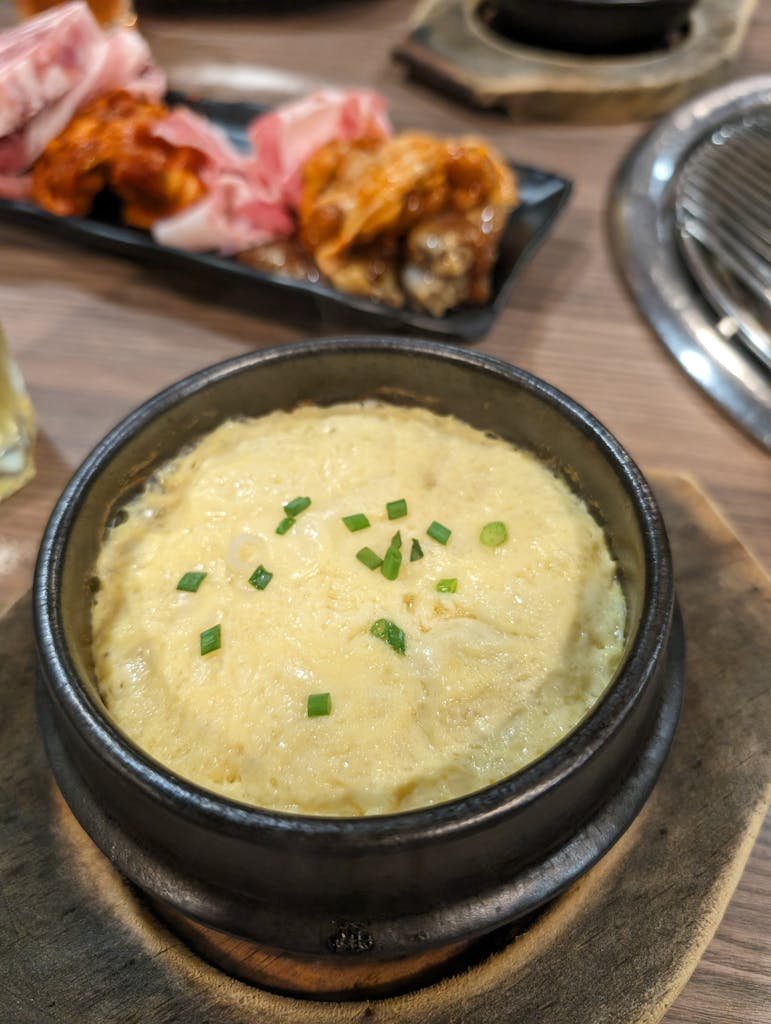
Gyeran Jim might not be the first Korean banchan that pops into your head, but believe me – it should! This silky steamed egg dish feels like a warm hug for your taste buds, and it’s much simpler to prepare than it seems.
Here’s what you need:
- 3 large eggs
- 2/3 cup warm water
- 1/4 teaspoon salt
- 1 green onion, finely chopped
- A pinch of sesame seeds
The key lies in the egg-to-water ratio and the steaming method. Whisk those eggs like they owe you money, then strain them through a fine-mesh strainer. I know it sounds a bit tedious, but this step is what gives you that silky smooth finish!
Steam them on low heat and try not to peek! Every time you lift that lid, you’re letting valuable steam escape. I accidently did this and my eggs ended up with more craters than the moon.
Stir-Fried Spinach (Sigeumchi Namul)
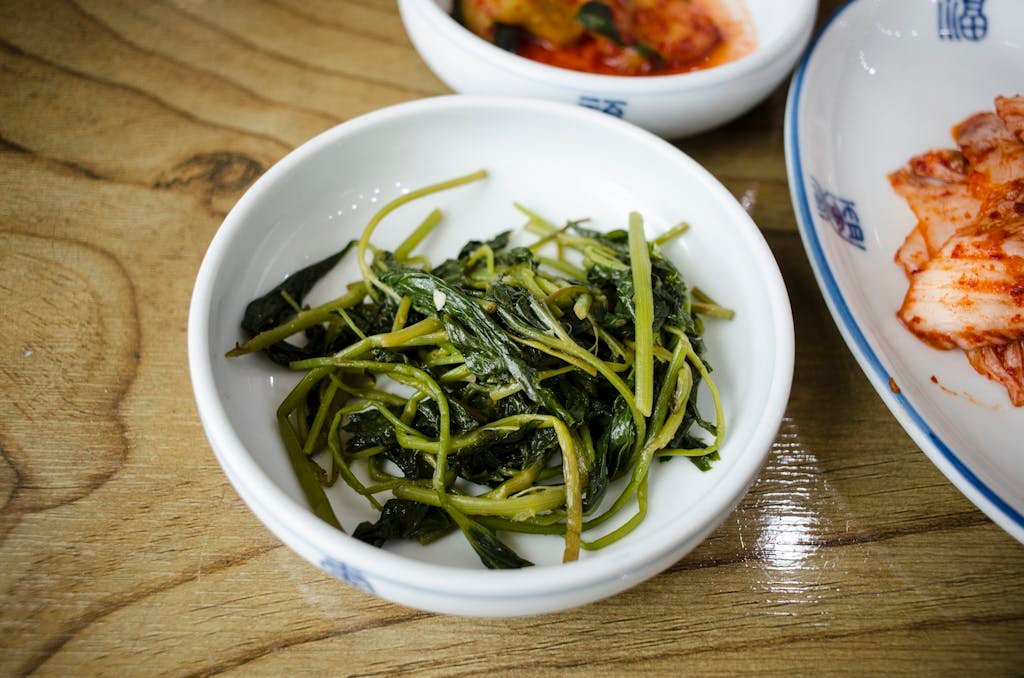
Lastly, let’s dive into Sigeumchi Namul! At first glance, it may seem like just wilted spinach, but believe me, it’s bursting with flavor beyond what you might expect.
I really recommend using fresh spinach for this dish—frozen just doesn’t cut it! You’ll need about a kilo of fresh spinach, which may seem like a lot, but it cooks down to barely enough for four servings.
The steps are straightforward:
- Blanch the spinach for 30 seconds
- Shock it in ice water (this step is crucial!).
- Squeeze out ALL the water
- Season with sesame oil, garlic, and salt
One common mistake is not squeezing out enough water. You really want to squeeze that spinach like it’s a stress ball after a tough day!
Bringing It All Together
Wow! We’ve really covered a lot of ground, haven’t we? These five Korean banchan recipes may seem straightforward, but they can elevate your Korean meals from “okay” to “fantastic!” Each dish adds its own unique flair to the table – quite literally!
Keep in mind, Korean banchan isn’t solely about sticking to the recipes. It’s about finding your rhythm in the kitchen and personalising these dishes. I’ve definitely had my fair share of kitchen mishaps (like that one time I mistakenly grabbed sugar instead of salt… let’s not go there), but that’s all part of the learning curve!
Start with these recipes, but once you feel confident, don’t hesitate to play around a bit. Maybe toss in a bit more garlic here or cut back on the salt there – tailor them to your palate! Just be sure to store everything in airtight containers, and most of these will keep well in the fridge for several days.
And if something doesn’t come out perfectly the first time? No problem! That’s just part of the experience. Keep practicing, and soon enough, you’ll be making Korean banchan like a seasoned chef. Now, get into that kitchen and start cooking – I can’t wait to hear about your Korean banchan adventures!






